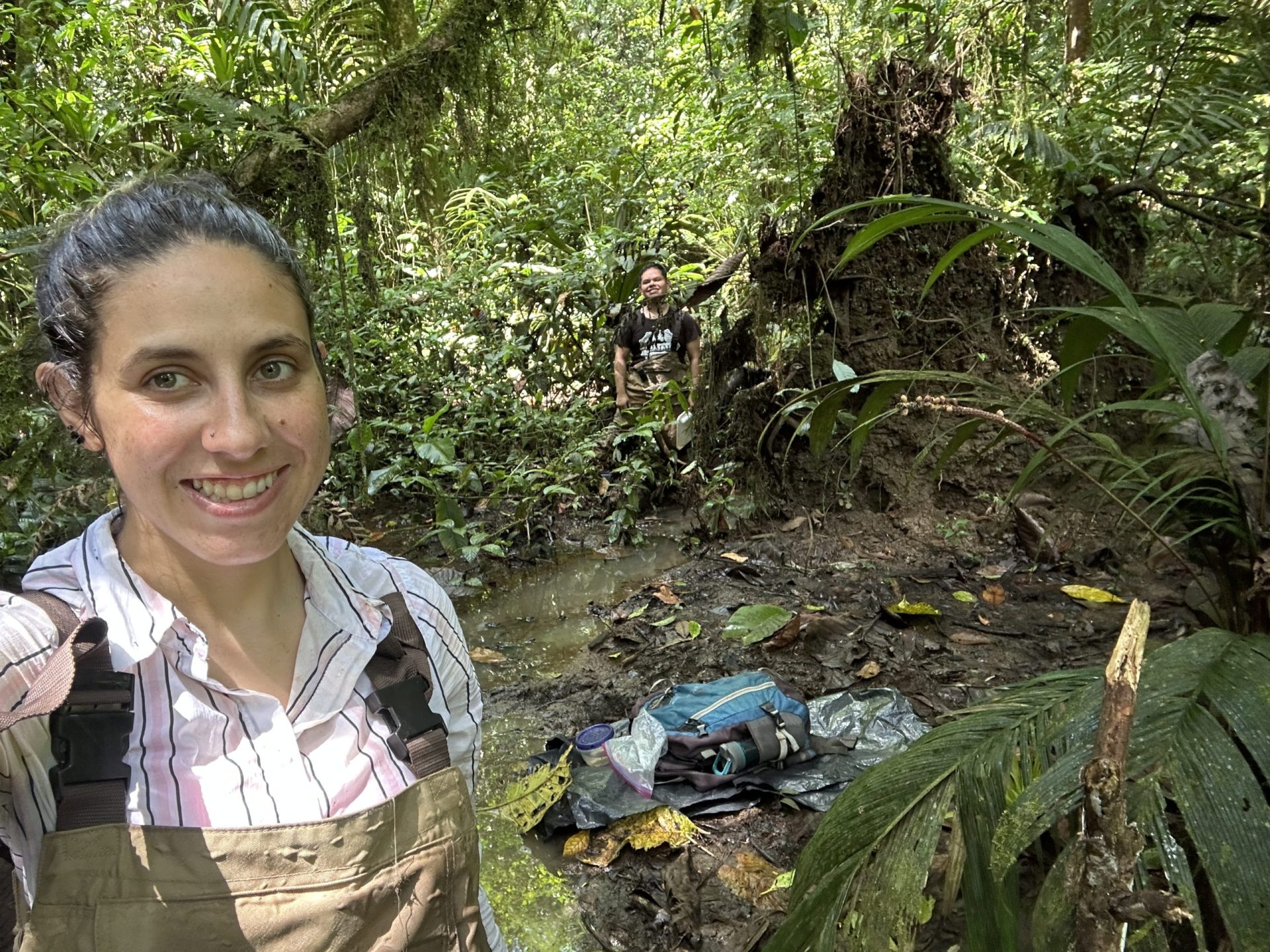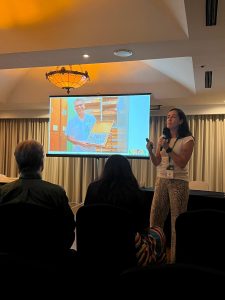
OTS represented at Barro Colorado Island 100th Anniversary Symposium. Dr. Sofia Rodriguez, OTS Costa Rica Director of Academic Programs, attended the 100th anniversary symposium of the Smithsonian Tropical Research Institute in June 2024. As part of a workshop on the Conservation Value of Field Stations, Sofia presented a talk highlighting some of OTS’ long-term and legacy data projects: OTS: Connections for Research, Education and Conservation.
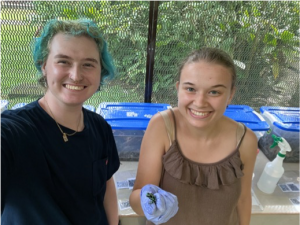
La Selva. Tab Henry and Claire Pringle, from the Burmeister Lab (UNC Chapel Hill), are studying the behavior of the green and black poison frog, Dendrobates auratus. Male D. auratus are the sole parental caregivers, transporting tadpoles on their backs from leaf litter to bromeliads and other phytotelmata sometimes hundreds of meters away. Although parental care and navigation behaviors are linked, it is not known how a male’s performance in a spatial task compares to his reproductive success. Tab will test male frogs in a detour experiment to understand how navigation strategies may differ between males that successfully reproduce and those that do not, asking, “Are smarter dads also better dads?” Tab will also collect data on the distribution of this frog species at La Selva. Claire’s goal is to understand how animal personality, or repeatable innate behavior, relates to cognition in D. auratus. She plans to investigate these questions in two parts. Claire is studying two aspects of personality, exploration and boldness, in wild-caught frogs. She suspects that bolder and more exploratory subjects are innately better at learning. She will test this hypothesis using a spatial visual maze developed in the Burmeister Lab. The research station itself has been an incredible place to conduct this research, not only for the bounty of natural resources but also for the scientific community of researchers and staff that flourishes here. We couldn’t imagine conducting this research anywhere else!— Tab Henry and Claire Pringle.
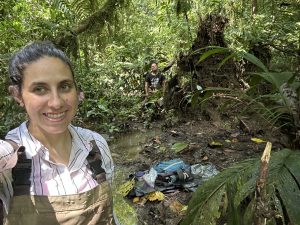
Ana Maria Meza Salazar (North Carolina State University) is researching the effects of climate change on aquatic insects. My project is part of the STREAMS project, established in 1986 to study the ecology and biogeochemistry of tropical lowland streams. Over the past three decades, the project’s legacy has involved students, faculty, researchers, and technicians, who have worked together as a team to contribute in areas such as the links between stream ecology and biogeochemistry, the ecology and natural history of aquatic communities, and the conservation of water resources and environmental outreach on water quality and quantity issues. Our research is carried out at the La Selva Biological Station, which has functioned as a natural laboratory for our studies. There, we have had technical support and the necessary equipment to develop our research and contribute to scientific knowledge. As a Ph.D. student from Colombia, the station and its staff have offered me what has been my second home for the past four years. They have fostered an ideal environment where I have been able to discuss my ideas and questions with scientists from all over the world. This has allowed me to broaden my perspective on how to do science and see the natural world in a more holistic way. — Ana Maria Meza Salazar.
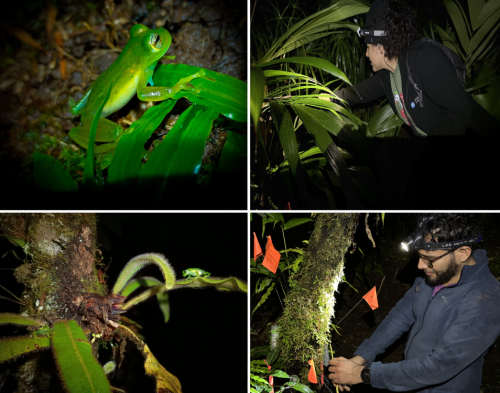
Las Cruces and Wilson Botanical Garden. Researchers from the University of Missouri (Dr. Johana Goyes Vallejos, along with graduate students Sebastian Curaca and Natalia Mejia and undergraduate Alma Jarbou) are investigating the microhabitat characteristics of oviposition sites in the emerald glass frog (Espadarana prosoblepon). The team monitors egg clutches laid on various plant substrates to determine if site choice impacts microhabitat conditions (e.g., temperature, humidity, rainfall) and offspring survival. Additionally, they study the calling activity patterns of males throughout the day and the onset of the rainy season using passive acoustic monitoring devices. — Johana Goyes Vallejos.

One of the most charismatic genera of plants at Las Cruces is Heliconia. With their striking red bracts and bright yellow flowers, these plants are hard to miss. However, their target of attention isn’t us – it’s an equally striking set of hummingbird pollinators. One Heliconia species in particular, H. tortuosa, not only attracts hummingbirds, but seems to be able to distinguish between them in a phenomenon called “Pollinator Recognition,”established by fellow researchers at Las Cruces. We are trying to determine how exactly this happens. What is the mechanism behind the recognition? From our preliminary results, we hypothesize that some hummingbird species, namely green hermits and violet sabrewings, have a specific morphology and behavior that inadvertently deposits a small amount of nectar on the stigma of the flower which hydrates the pollen and promotes pollen germination. We propose that this “nectar drop” is the distinguishing factor between pollinator species that allows for recognition. — Ferne Kotlyar.
Banner image by Ana Maria Meza Salazar.

